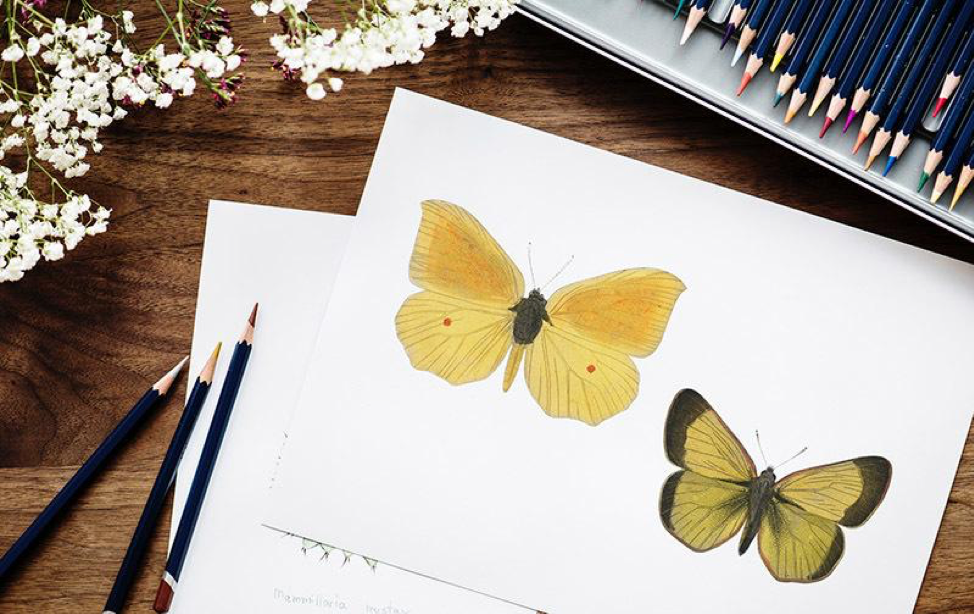You’ve been feeling it for a while, that “itch,” that sense that there’s another level…

A Guide to Pricing Your Artwork With Confidence
As an artist, you work tirelessly to become an expert in your chosen medium. You have spent thousands upon thousands of hours honing your craft. You have mostly likely spent much less time thinking about the implications of your pricing. It is the part of the process that many artists struggle with the most.
Setting prices can make us uncomfortable. Artwork is so deeply personal, it often feels like there isn’t an objective way to place monetary value on artistic work. You don’t want to sell yourself short, but you also want to make sales. How do you find that sweet spot where your work is selling and you are getting to the salary you deserve?
If you don’t have a consistent history of selling your art in a particular price range or in a particular market, follow these seven tips to get started.
Research equivalent artwork in similar markets
It’s easier than ever to do market research on comparable artwork. Put your research cap on and start looking for artists that have similar work to what you are currently producing.
How much do these artists charge for their work? Is there a pattern in this pricing?
Seeking out artists who have similar work will give you a better idea of what you can and should be charging. Make sure you are making an honest evaluation of your work and then comparing it to artists with a similar style, working in a similar medium, with a similar amount of experience, as well as selling within a similar geographical region.
Pick the brains of your successful peers. Ask your friends about your pricing structure. How much they are selling their work for and why? Engaging in open discussions about money will help guide you and ensure that your pricing is on track.
Factor in your own salary
Overworked + underpaid = burn out.
Creating artwork isn’t free. There are pricey materials, equipment, and studio space to take into account.
Think of a reasonable wage for yourself and work backward. The US Dept. of Labor lists the average hourly wage for a fine artist as $24.58—use this to help you estimate. Be diligent when recording how long a work takes you and then factor in the cost of materials and overhead.
Of course, when you are just starting out, something might take you much longer than a master in your field. On the other hand, when you have mastered a discipline, it might take you a much shorter time to complete a work and you will be able to demand a much higher price for it.
In short, this isn’t a fool-proof method, but it is a good way to get started in gauging the worth of your work.
Stay consistent after you have determined a pricing model
It doesn’t matter if you are selling out of a gallery, selling wholesale or selling straight out of your studio … your retail prices need to remain consistent.
Galleries and wholesalers will notice if you hike your prices up and drop them at your convenience—and they will drop you.
It is tempting to sell your work at lower prices out of your studio or online, but think again. Galleries put time and energy into their sales and generally aren’t happy to learn you’ve been selling work for a lot less.
What’s more, other galleries could learn about this and be less inclined to work with you. Make sure you have set prices that are generally the same for your studio and your galleries. That way people can purchase your work from your studio or the gallery, and you can maintain a positive relationship with your galleries.
That said, with more and more people buying artwork online and directly from artists on Instagram, you might not have to take this commission into consideration if you are focusing on the online sales market.
Acknowledge feelings vs. facts
Easier said than done.
However, it’s not easy to justify your prices to a potential buyer by saying you just really like it. If there is a particular piece that you just feel really strongly about, consider keeping those works for yourself.
With all the time, creative effort and emotion you invest in your work, it’s easy to get attached. Take a step away from your work after you finish it to gain some perspective. Then, approach your pricing as you would any other product. Some artists like to use a sizing formula. Pricing your work needs to be predominantly based on its physical attributes and not on personal value.
Set multiple price points
Some new customers might shy away from higher priced art or it simply might not be in their budget. Smaller, less expensive pieces are more approachable and good for first time buyers. For example, a young buyer might not have the funds for a $3000 painting but can afford a $300 one. They still get to take a piece of your art home and fall in love with your work. When they have a higher art budget in the future, your art will already be top of mind.
Prints are a wonderful way for buyers to feel like they are taking home a piece of your art. Prints are a great way for tentative buyers to get their feet wet. When they are more comfortable, they can upgrade to a more expensive artwork. The more people who buy your art, the more exposure it will get. More people will see it, talk about, and want to know more about you. Your range of price points can foster goodwill—people will be happy they can bring home one of your creations—and bring sales back to you.
Be transparent with your prices
Having to ask for a price can raise red flags. It sets off alarms that you might be changing your prices based on who is asking. Having your prices up front and available demonstrates your integrity.
Additionally, if talking about money makes you uncomfortable, it helps you avoid a lot of potentially awkward conversations. Putting that information puts the decision making on the buyer. It gives them time to decide which piece is within their budget and then they can approach you ready for an easy transaction.
One easy way to show your work that gives your buyers confidence is through Artwork Archive’s public portfolio page. Artwork Archive gives you the control over your public information, links with your most up-to-date inventory, and gives potential buyers the options to contact you directly.
Use evidence to stay confident in your pricing
Whether you are a seasoned artist or just starting out, it’s important to have confidence in yourself and your prices. If you don’t, buyers will figure it out quickly. The next time someone asks you why a piece is so expensive (which they always will), have a prepared answer.
Show them that you’ve been regularly selling comparable art for that same amount. Talk about, or print out provenance records, that show the similar sales you have made from galleries, dealers and out of your studio. People want to be able to justify their purchase with cold, hard evidence. They want to know they are spending their money wisely.
Put their mind at ease with collector testimonials to show that your work is valued by other. Articulate that you price your work is methodical and fact-based. When you take the time to properly and realistically price your work, you can stand behind the price. If the buyer wants to go below that, you’ll be ready to justify your price. Confidence does wonders and will help you come home with the money you deserve.
This post was contributed by our friends at Artwork Archive. They are offering Artpreneur readers 20% off their plan when you sign up for a free trial now!






